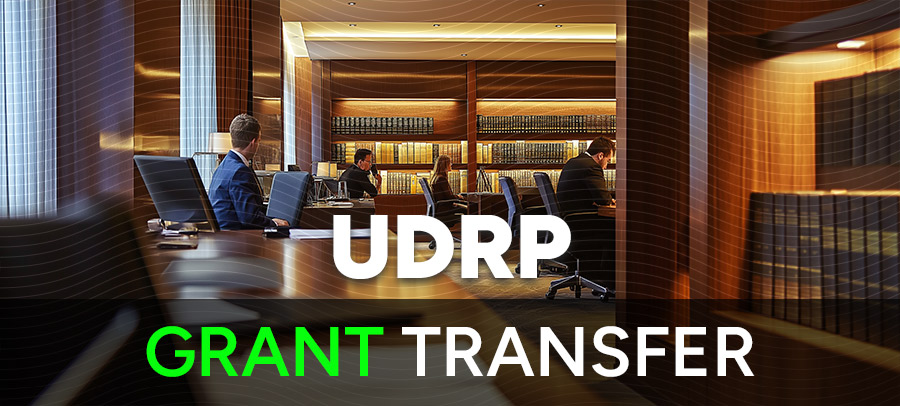Domain investors, or individuals enamored with a famous mark such as MIT, should not attempt to register domains on behalf of the trademark holder.
Claiming that such registrations are made to “protect” the mark and its fame, all while seeking to reclaim out of pocket costs do not go well together.
In the UDRP case filed against the domain MIT.school, the Respondent argued that in the beginning of 2021, it notified MIT via email and Twitter to warn of the risk that mit.school could be misused if left unregistered, offering to transfer the disputed domain name to Complainant allegedly without demanding payment. It claimed that its aim was to safeguard MIT’s brand and ensure no malicious party exploited the name.
Further down the case, the Respondent staked out of pocket costs of $300 and another $1,000 to cover time spent responding, as mentioned in the UDRP.
The Forum panelist would not take any of this nonsense and ordered the domain MIT.school to be transferred to the Complainant, the Massachusetts Institute of Technology (MIT).
Copyright © 2025 DomainGang.com · All Rights Reserved.
Massachusetts Institute of Technology v. Boris Berenberg
Claim Number: FA2502002138850
PARTIES
Complainant is Massachusetts Institute of Technology (“Complainant”), represented by Jeanette Eriksson of FairWinds Partners LLC, District of Columbia, USA. Respondent is Boris Berenberg (“Respondent”), California, USA.
REGISTRAR AND DISPUTED DOMAIN NAME
The domain name at issue is mit.school, registered with NameCheap, Inc.
PANEL
The undersigned certifies that they have acted independently and impartially and to the best of their knowledge have no known conflict in serving as Panelist in this proceeding.
Eduardo Magalhães Machado as Panelist.
PROCEDURAL HISTORY
Complainant submitted a Complaint to Forum electronically on February 5, 2025; Forum received payment on February 5, 2025.
On February 5, 2025, NameCheap, Inc. confirmed by e-mail to Forum that the mit.school domain name is registered with NameCheap, Inc. and that Respondent is the current registrant of the name. NameCheap, Inc. has verified that Respondent is bound by the NameCheap, Inc. registration agreement and has thereby agreed to resolve domain disputes brought by third parties in accordance with ICANN’s Uniform Domain Name Dispute Resolution Policy (the “Policy”).
On February 6, 2025, Forum served the Complaint and all Annexes, including a Written Notice of the Complaint, setting a deadline of February 26, 2025 by which Respondent could file a Response to the Complaint, via e-mail to all entities and persons listed on Respondent’s registration as technical, administrative, and billing contacts, and to postmaster@mit.school. Also on February 6, 2025, the Written Notice of the Complaint, notifying Respondent of the e-mail addresses served and the deadline for a Response, was transmitted to Respondent via post and fax, to all entities and persons listed on Respondent’s registration as technical, administrative and billing contacts.
A timely Response was received and determined to be complete on February 19, 2025.
On February 19, 2025, Complainant submitted an Additional Submission.
On February 20, 2025, pursuant to Complainant’s request to have the dispute decided by a single-member Panel, Forum appointed Eduardo Machado Magalhães as Panelist.
Having reviewed the communications records, the Administrative Panel (the “Panel”) finds that Forum has discharged its responsibility under Paragraph 2(a) of the Rules for Uniform Domain Name Dispute Resolution Policy (the “Rules”) “to employ reasonably available means calculated to achieve actual notice to Respondent” through submission of Electronic and Written Notices, as defined in Rule 1 and Rule 2.
RELIEF SOUGHT
Complainant requests that the domain name be transferred from Respondent to Complainant.
PARTIES’ CONTENTIONS
A. Complainant
The Complainant argues that it has rights to the MIT trademark and makes extensive use of it such that it has become famous. It affirms that the Massachusetts Institute of Technology, referred to as MIT, is one of the most famous universities in the world for the study of applied science and engineering.
The Complainant states that in promoting its educational and other services, and associated MIT merchandise, it uses such diverse channels as print advertisements and brochures, online ads, social media, competitions, sponsorships, and the like. It also maintains a website at www.MIT.edu which is used by applicants, students, faculty, suppliers, and others. It also uses the MIT.edu address for much of its email communications.
Furthermore, it claims that the domain name in dispute is identical to Complainant’s registered and distinctive MIT trademark, which was obtained and became well-known long prior to the creation date and Respondent’s acquisition of the disputed domain name.
The Complainant claims that the Respondent is using an identical copy of its MIT trademark, merely adding the “.school” TLD, thereby making internet users and recipients of emails from the disputed domain name think that it originates from Complainant or is at least affiliated with, endorsed or sponsored by Complainant. It also claims that the addition of the “.school” gTLD does nothing to alleviate confusion between the MIT trademark and the disputed domain name.
Moreover, the Complainant states that the Respondent’s actions are not a bona fide offering of goods and services under Policy 4(c)(i), not in a manner that constitutes a legitimate noncommercial or fair use under Policy 4(c)(iii). It claims that prior to Complainant’s representative sending cease and desist letters to the Respondent, when input into a browser, the disputed domain name redirected internet users to Stanford Business school’s website, and now it redirects to Caltech school’s website, which is another well-known school. In addition, it claims that apart from the website to which the disputed domain name resolves, the domain name itself is an impersonation of the MIT trademark and thus conveys no rights or legitimate interests to Respondent.
Moreover, the Complainant affirms that the Respondent it not commonly known by the disputed domain name or the term “MIT”, and it does not operate a business or other organization under the name “MIT”, nor does the Respondent own any trademark or service mark rights in the word MIT. In addition, it states that the Respondent is not using the disputed domain name in any fair, descriptive or nominative purpose under Policy 4(c)(iv).
Further, the Complainant states that the Respondent intentionally targeted the MIT trademark without the Complainant’s consent. It claims that the Respondent was on actual notice of Complainant’s rights in its globally well-known MIT trademark as a result of Complainant’s extensive use of the trademark which long predates the date of which the Respondent acquired the disputed domain name.
It claims that the fact that the disputed domain name contains the entirety of Complainant’s MIT trademark and is registered under the highly relevant gTLD “.school” is forwarded to competing school’s websites, as well as the fact that the Respondent has made clear that the Complainant was what he had in mind when registering the disputed domain name make clear that the Respondent created the disputed domain name upon its knowledge of Complainant’s MIT trademark. The Complainant affirms that Respondent’s actions further create a likelihood of confusion as to the source, sponsorship, affiliation, or endorsement of the Disputed Domain Name.
B. Respondent
The Respondent argues that in the beginning of 2021, it notified MIT via email and Twitter to warn of the risk that mit.school could be misused if left unregistered, offering to transfer the disputed domain name to Complainant allegedly without demanding payment. It claims that its aim was to safeguard MIT’s brand and ensure no malicious party exploited the name.
It affirms that it has never demanded a sum exceeding out-of-pocket costs, rather requesting an opportunity for a conversation about possible consideration for admission or a meeting to discuss ways to collaborate.
Moreover, the Respondent claims that it briefly pointed the disputed domain name to other notable educational institutions, such as Stanford and Caltech, to attract Complainant’s attention after MIT repeatedly ignored earlier notifications, which was an alleged genuine effort to highlight a security gap and underscore the domain’s significance to MIT. It alleges that it was not to disrupt MIT’s business or confuse users.
Further, it claims that once Complainant initiated further contact, it has agreed to transfer the domain, requesting only a standard waiver and release to prevent future misunderstandings or claims, to which Complainant’s counsel never responded.
The Respondent claims that it has never demanded an amount higher than the documented costs for the disputed domain name. It also claims that the fact that it created email exchange records would not prove its bad faith, given that domain registrars commonly automatically create such records to enable email functionality, and Respondent did nothing nefarious to configure such records.
It claims that its actual intent by redirecting the disputed domain name to Stanford or Caltech was to highlight the potential security or phishing risks, being simply to draw MIT’s attention to the domain name, and not to harm MIT or trade on its goodwill.
The Respondent claims that the Complainant’s counsel did not even address the Respondent’s request for a simple transfer in exchange for coverage of out-of-pocket costs and a standard liability waiver.
Finally, it requested the Panel to transfer the disputed domain name to Complainant; that Complainant issue a waiver and release clause, to prevent further disputes or claims by either party regarding the disputed domain name or related issues; and that Complainant be instructed to reimburse Respondent’s out-of-pocket costs which amount to USD 300.30, and a further USD 1,000 to cover the costs of its time responding to this Complaint.
C. Additional Submissions
The Complainant timely filed an Additional Submission, claiming that the email the Respondent attached as evidence, that was supposedly sent to MIT, lacks date stamp, which puts it legitimacy into question. In addition, the Respondent would be continuously asking for various things in return for the disputed domain name, as seen across all correspondence provided in this case.
It claims that the Respondent would be in a clear pursuit to profit in some fashion from or otherwise exploit the Complainant’s trademark, which would prove its bad faith. Respondent’s claims that it was only performing a security mitigation would be merely a pretext for its efforts in registering and using the disputed domain name to profit.
It affirms that Respondent’s claim that it offered to hand over the domain under fair terms merely relate to the post-commencement settlement discussions, and not to its initial pre-notice of the dispute intentions or actions.
Finally, it claims that the parties have both asked for the disputed domain name to be transferred to the Complainant to resolve the dispute, and, therefore, the Panel may rely on the principle of not issuing a decision that would be either less than requested, nor more than requested by the parties.
FINDINGS
The Complainant is the owner of the following trademarks and service marks, registered with the United States Patent and Trademark Office:
– Reg. No. 1562643, for the MIT word mark, in international class 41, granted on October 24, 1989, to identify “educational services, namely, providing courses of instruction at the college and graduate level”;
– Reg. No. 1500620, for the MIT word mark, in international class 25, granted on August 16, 1988, to identify “clothing, namely, sweaters, sweatpants, sweatshirts, jackets, t-shirts, neckties, shorts and shirts”;
– Reg. No. 1502243, for the M.I.T word mark, in international class 21, granted on August 30, 1988, to identify “coffee cups, coffee mugs and glassware”; and
– Reg. No. 3045569, for the (MIT) composite mark, in international classes 16, 25 and 41, granted on January 17, 2006, to identify “paper goods and printed matter, namely notebooks, appointment books, calendars, pens, pencils, stationery, binders and decals”, “clothing, namely t-shirts, sweatshirts, shorts and caps” and “educational services, namely providing courses for instruction at the college, graduate and PhD level”.
Complainant is also the owner of the registration No. 010111391, for the MIT word mark, with the European Union Intellectual Property Office, in international classes 9, 16, 25, 35, 41, 42 and 45, granted on December 24, 2015, to identify “Computer hardware, computer operating programs, computer software, DVDs, CDs, optical discs, video tapes, audio tapes, video and audio tapes, magnetic tapes and discs, video cassettes and other recorded media”, “Paper goods and printed matter, namely, notebooks, appointment books, calendars, pens, pencils, stationary, binders and decals, publications and periodicals, instructional and teaching materials in printed form”, “Clothing, namely, t-shirts, sweat shirts, sweat pants, shorts, sweaters, hats, belts, coats, jackets, gloves, socks, hosiery, pants, sport jerseys, children’s clothing, headgear, footwear”, “Consulting services and research in the field of business management and administration”, “Educational services, namely, providing courses of instruction at the college and graduate levels, and conducting educational programs, seminars, workshops and public lectures, distribution of results of basic and directed research in all fields of study via publication”, “Scientific and industrial research, namely, basic and directed research in all fields of study funded from various sources including tuition, government funding and industrial funding sources, computer programming, namely, engaging in computer programming activities in connection with the provision of scientific and industrial research, and for the purposes of creating software, hardware and global networking standards, provision of computer software, leasing of computer programs relating to data processing equipment” and “Intellectual property licensing, transfer of intellectual property rights in results of basic and directed research in all fields of study, licensing of computer software, licensing of documentation in electronic and/or printed form related to computer software”.
The disputed domain name was registered on September 3, 2021. It currently redirects to the website hosted under the domain name caltech.edu. This website refers to the California Institute of Technology (Caltech), featuring information about the institution’s academic programs, research initiatives, faculty, and admissions, for example.
The Respondent has not proven any legitimate interests or rights over the disputed domain name.
The Complainant has proven the Respondent’s bad faith and the domain name should be transferred to the Complainant.
DISCUSSION
Paragraph 15(a) of the Rules instructs this Panel to “decide a complaint on the basis of the statements and documents submitted and in accordance with the Policy, these Rules and any rules and principles of law that it deems applicable.”
Paragraph 4(a) of the Policy requires that Complainant must prove each of the following three elements to obtain an order that a domain name should be cancelled or transferred:
(1) the domain name registered by Respondent is identical or confusingly similar to a trademark or service mark in which Complainant has rights; and
(2) Respondent has no rights or legitimate interests in respect of the domain name; and
(3) the domain name has been registered and is being used in bad faith.
Identical and/or Confusingly Similar
The domain name mit.school fully reproduces the Complainant’s prior and well-known MIT trademarks.
The addition of the “.school” gTLD reinforces, rather than distinguishes, the association with the Complainant, as MIT is an educational institution.
Therefore, the Panel concludes that the domain name in dispute is identical and confusingly similar to the Complainant’s trademarks, under Paragraph 4(a)(1).
Rights or Legitimate Interests
According to Paragraph 4(c) of the Policy, a Respondent may establish its rights or legitimate interests in the disputed domain name by showing any of the following elements:
“(i) before any notice to you [Respondent] of the dispute, your use of, or demonstrable preparations to use, the Domain Name or a name corresponding to the Domain Name in connection with a bona fide offering of goods or services; or
(ii) you [Respondent] (as an individual, business, or other organization) have been commonly known by the Domain Name, even if you have acquired no trademark or service mark rights; or
(iii) you [Respondent] are making a legitimate noncommercial or fair use of the Domain Name, without intent for commercial gain to misleadingly divert consumers or to tarnish the trademark or service mark at issue.”
The Respondent failed to show any use of or demonstrable preparations to use the disputed Domain Name in connection with any bona fide offering of goods or services. In fact, the Respondent itself acknowledged the Complainant’s prior rights, stating that it registered the domain name to prevent it from being misused if it remained unregistered, and also requested the transfer of the disputed domain name to Complainant.
In any case, it is important to highlight that the Respondent also failed to submit any proof that he has been commonly known by the Domain Name. The fact that the Respondent has obtained the disputed domain name is not enough to give him a legitimate interest (See MADRID 2012, S.A. v. Scott Martin-MadridMan Websites, D2003-0598 (WIPO October 8, 2003) finding that “The mere presence in the WhoIs-database is not sufficient in this regard as otherwise every registrant of a domain name could establish a legitimate interest under the Policy, paragraph 4(c)(ii) by using this argument” and Bayerische Motoren Werke AG v. James Vergis, Stressfree Driving School Pty Ltd, D2017-0071 (WIPO March 13, 2017) finding that “To hold a domain name that can only be sensibly understood as incorporating and seeks to take advantage of an association with the trade mark of another for the purposes of sale to a third party also does not provide a legitimate interest in that domain name.”).
The Panel finds that Respondent has no rights or legitimate interests in the domain name.
Registration and Use in Bad Faith
The Complainant presented very compelling evidence that the Respondent registered the disputed domain name in order to use it as leverage to sell it or to get a spot in an MBA program from the Complainant.
Initially, it is important to note that the Respondent admitted that it was fully aware of the Complainant’s trademark when it registered the domain name, a famous trademark in the educational field, which is already an indication of bad faith (See Massachusetts Institute of Technology v. Mehmet Hakan Peker / LabsDGs, FA 2065972 (Forum Nov. 9, 2023) finding that “First, the evidence shows that when the Respondent registered the disputed domain name it had actual notice of the Complainant and its trademark as it is common sense that that is so and as the MIT and its mark are famous.”).
Further, as seen in Complainant’s Exhibit G, after the Complainant’s counsel contacted the Respondent about the domain, it stated the following:
– “If your customer would like to purchase the domain at this time, I am happy to enter into a discussion”;
– “I registered it [the domain name] to protect MIT from someone abusing it or for other projects I may want down the line similar to other domains I hold in my portfolio”;
– “I would want to discuss handing the domain over for free if they would consider accepting me into their exec MBA program”.
It is important to note that the Respondent’s argument that it registered the domain name to protect MIT’s interests is not only inconsistent with its own actions, but is also not valid to justify any legitimate interest in the domain name. The Respondent has no rights in the Complainant’s MIT trademark, nor any authorization from the Complainant to proceed with the registration of the domain name in its name, using a full reproduction of the Complainant’s trademark.
If it were in fact seeking to protect the Complainant’s interests, when contacted by the Complainant’s counsel, instead of offering the domain for sale or in exchange for a place on the Complainant’s MBA program, the Respondent would have already offered to transfer it at no greater cost to the Complainant, which is not what happened.
Moreover, as the Complainant rightly pointed out in its additional submission, the Respondent, claiming that in 2021 it offered the disputed domain name to MIT, attached insufficient proof of this claim, merely attaching an email without any date or additional probative information as to the contact to whom that email was sent. Even if it were true, in the printout of this email that he allegedly sent to MIT’s team, although the subject line of the email contains the domain mit.school, in the content of this email the Respondent offered the domain nyu.school to MIT.
In fact, according to the evidence provided by the Complainant in the exchange of emails between the parties, the Respondent also claims to be the owner of the nyu.school domain in order to allegedly prevent any kind of abuse by third parties. Although not a significant number, considering the specific details of the present case, this shows at least a tendency towards a pattern on the part of the Respondent of registering domain names that incorporate world-renowned trademarks of academic institutions, without having any right or authorization to do so.
Bad faith becomes even more evident when it is verified that the disputed domain name redirects to the website of a different educational institution, since the redirection can generate undue traffic to this other institution, taking advantage of the notoriety of the MIT brand to attract users looking for information about the Complainant. If the Respondent were really concerned about protecting Complainant’s interests, it would certainly not use the domain to direct traffic to an unrelated educational institution, but rather voluntarily hand it over to the Complainant.
Thus, the Respondent’s registration of the disputed domain name using the Complainant’s trademark, without any authorization, under the justification of “protection against abuse” proves to be inappropriate, since in reality such registration may cause confusion among Internet users and harm the legitimate owner of the trademark.
Regarding the email sent by the Respondent requesting that a waiver and release clause be added to the domain transfer agreement, it can be seen from the evidence provided by the Respondent itself that this email was sent on February 17, 2025, that is, after the commencement of the present proceedings. Thus, the Respondent’s argument that it acted in good faith by offering to transfer the domain voluntarily is undermined by the timing of this communication. The fact that the Respondent only suggested adding a waiver and release clause after the dispute had already been initiated suggests a strategic maneuver rather than a genuine willingness to resolve the matter amicably.
Therefore, the Panel concludes that the requirements of paragraph 4(a)(iii) of the Policy have been sufficiently made out by the Complainant and that the Respondent’s bad faith registration and use of the Domain Name has been proven.
DECISION
Having established all three elements required under the ICANN Policy, the Panel concludes that relief shall be GRANTED.
Accordingly, it is Ordered that the mit.school domain name be TRANSFERRED from Respondent to Complainant.
Eduardo Magalhães Machado, Panelist
Dated: March 6th, 2025











